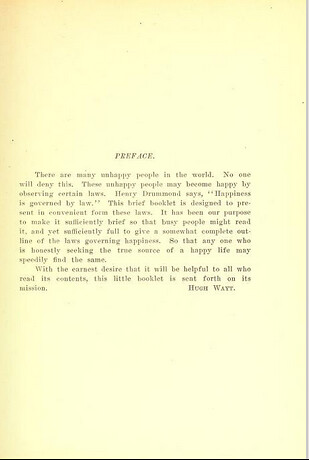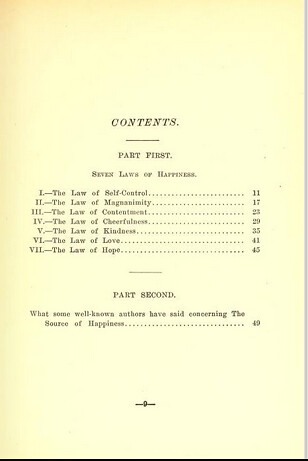This article is more than 5 years old.
This Religion in North Carolina blog post was written by Caroline Green, Religion in NC student assistant.
An ever-growing barrage of self-help books attests to a modern fascination with achieving elusive happiness. Principles like minimalism, focus on others, and appreciation of small details prevail as themes when success is not mistaken for happiness. Titles like Authentic Happiness: Using the New Positive Psychology to Realize Your Potential for Lasting Fulfillment by Martin E. P. Seligman or Happiness Now!: Timeless Wisdom for Feeling Good Fast by Robert Holden are popular if ubiquitous. While the pervasiveness of the genre is recent, the appeal of it is not. Some form of self-help instruction has existed since ancient times. The True Source of a Happy Life by Hugh Wayt presents some of the ideologies of contentment of a hundred years ago.
Published in 1909, The True Source of a Happy Life claims that happiness can be achieved by following prescribed rules. Wayt says in the preface, “There are many unhappy people in the world. No one will deny this. These unhappy people may become happy by observing certain laws.” The book details seven laws, including self-control, magnanimity, contentment, cheerfulness, kindness, love, and hope, concepts still relevant today. The True Source of a Happy Life both offers a glimpse into changing and consistent philosophies and reminds us that our answers to life’s largest questions are relative.
We hope that you enjoy this snippet of history and continue to explore our Religion in North Carolina Digital Collection.
Bibliography
Lamb-Shapiro, Jessica. “A Short History of Self-Help, The World’s Bestselling Genre.” Publishing Perspectives. November 29, 2013. Accessed June 3, 2015. http://publishingperspectives.com/2013/11/a-short-history-of-self-help-the-worlds-bestselling-genre/.
https://archive.org/details/truesourceofhapp00hugh




1 Comment on ‘The True Source of a Happy Life, 1909’
Always good to hear happy news.